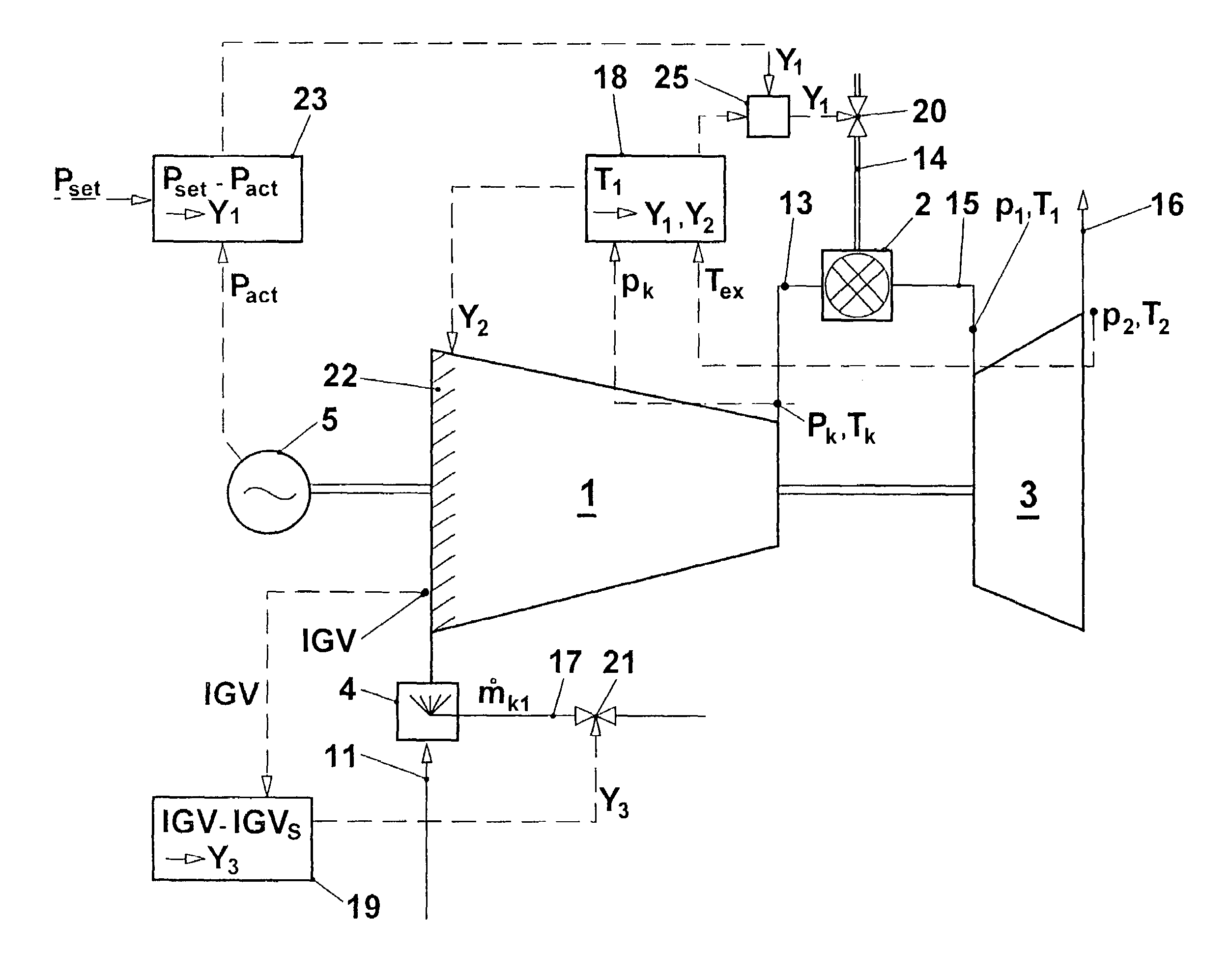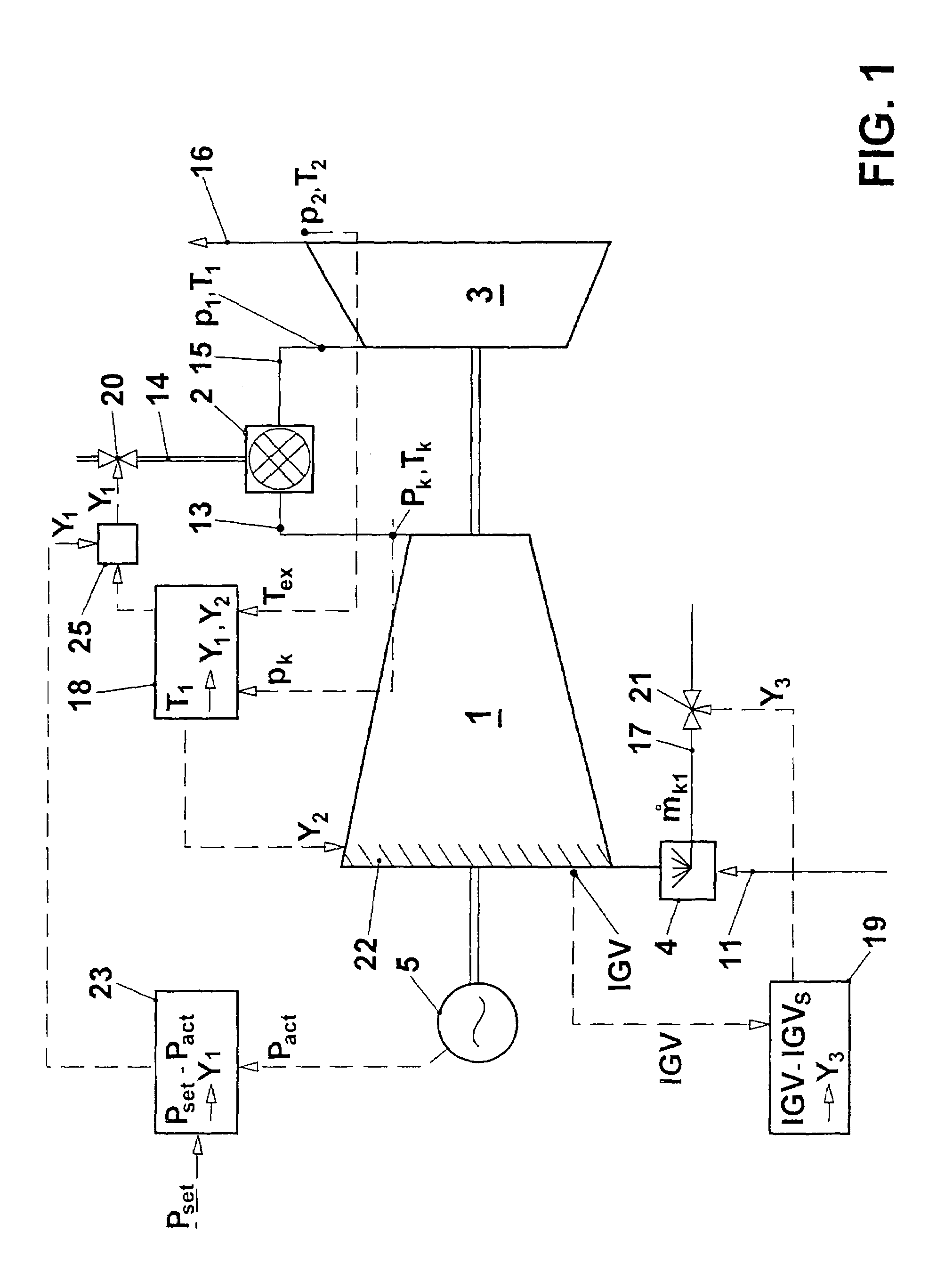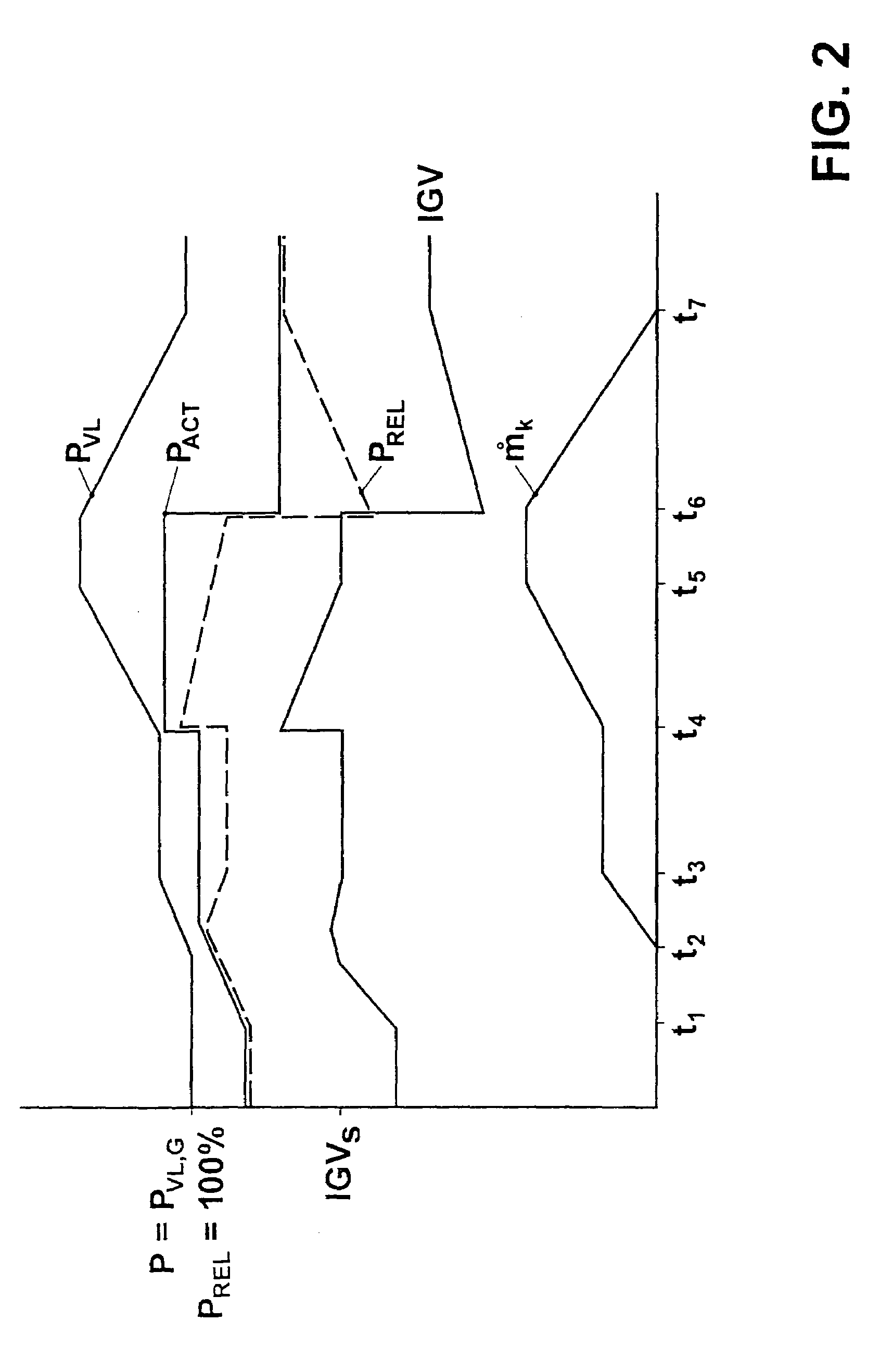Method of operating a gas turbine group
a gas turbine and group technology, applied in the direction of engines, machines/engines, mechanical apparatus, etc., can solve the problems of increasing the attainable maximum power of the gas turbine group, the internal cooling of the compressor, and the maximum power, so as to reduce the cooling effect, reduce the effect of fuel burnout and stable operation
- Summary
- Abstract
- Description
- Claims
- Application Information
AI Technical Summary
Benefits of technology
Problems solved by technology
Method used
Image
Examples
Embodiment Construction
[0028]In the gas turbine group represented in FIG. 1, a flow of working fluid, an induced air flow 11 in the present case, is compressed in a compressor 1 to a pressure pk and, in the process, is heated to the temperature Tk. The compressed air 13 flows into the combustion chamber 2. A fuel quantity 14, which is metered by a fuel quantity setting unit, is mixed with the compressed air 13 and is there burnt in the air. The unexpanded hot combustion gas 15 flows with the pressure p1 and the turbine entry temperature T1 into the turbine 3. The pressure p1 corresponds, essentially, to the compressor exit pressure pk, reduced by the combustion chamber pressure loss. The unexpanded combustion gas 15 is expanded in the turbine 3 to a pressure pex. This corresponds, essentially, to the ambient pressure. During the expansion, work is performed in the turbine. The exhaust gas 16 flows away with a temperature Tex and can, in a manner known per se, be used in a waste-heat steam generator, for e...
PUM
 Login to View More
Login to View More Abstract
Description
Claims
Application Information
 Login to View More
Login to View More - R&D
- Intellectual Property
- Life Sciences
- Materials
- Tech Scout
- Unparalleled Data Quality
- Higher Quality Content
- 60% Fewer Hallucinations
Browse by: Latest US Patents, China's latest patents, Technical Efficacy Thesaurus, Application Domain, Technology Topic, Popular Technical Reports.
© 2025 PatSnap. All rights reserved.Legal|Privacy policy|Modern Slavery Act Transparency Statement|Sitemap|About US| Contact US: help@patsnap.com



